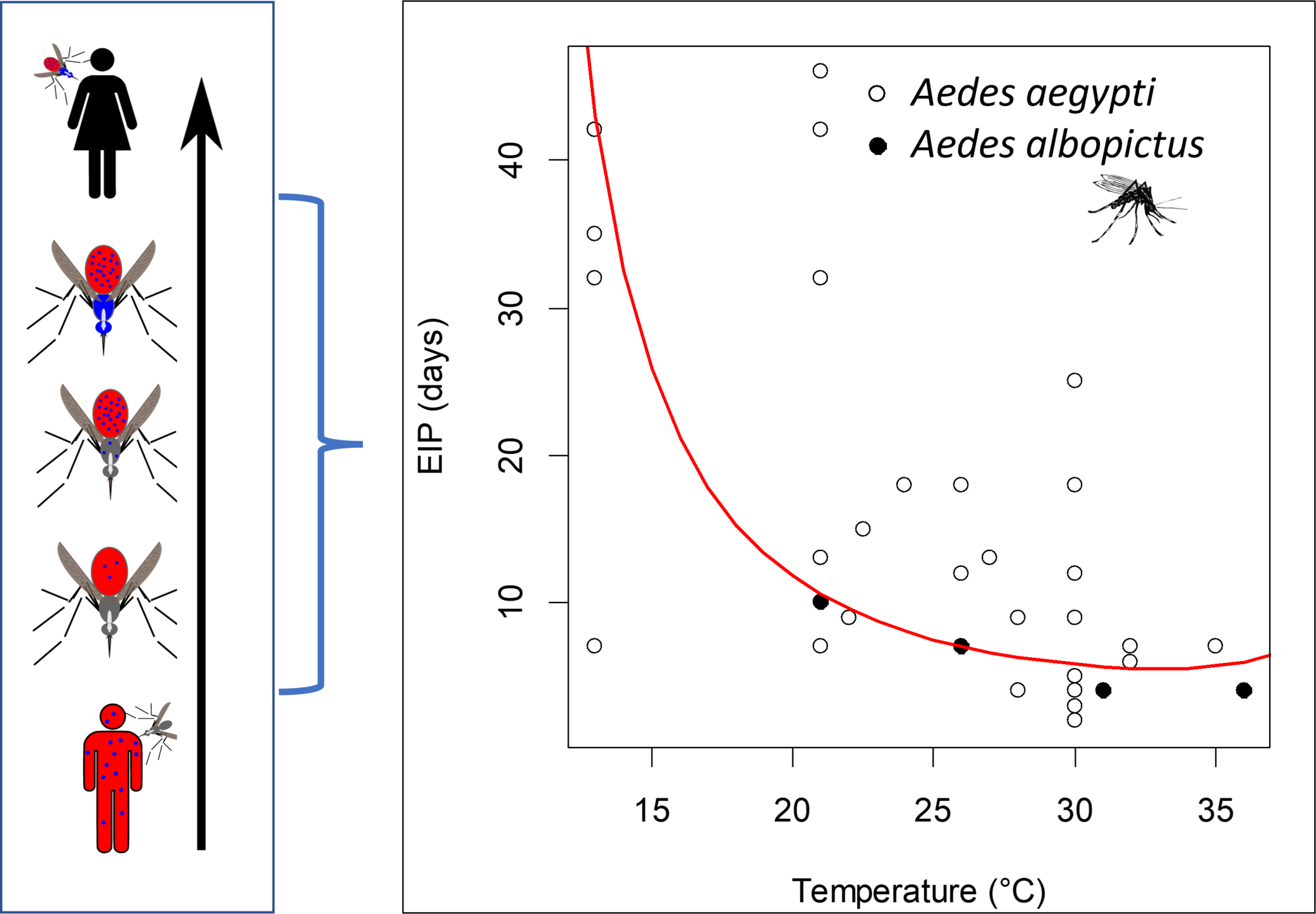Vector-borne diseases and models
Living organisms that transmit pathogens from one host to another are called vectors. These are often arthropods (insects) like mosquitoes, ticks, fleas, etc. Diseases transmitted by vectors are known as vector-borne diseases. Many of these diseases are zoonoses, meaning they can be transmitted directly or indirectly between animals and humans.
In the case of West Nile virus, the hosts are mainly birds: migratory birds bring the virus from the tropics to the Mediterranean, southern Europe and increasingly north of the Alps. Mosquitoes (mainly of the genera Culex and Aedes) pick up the virus from their hosts and transmit it to humans, horses and other mammals. Horses and humans are so-called false hosts with low-grade viremia, i.e. they are not a source of virus for mosquitoes.
When a vector picks up the virus from a host, the virus must replicate in the mosquito's digestive tract, then pass through the stomach wall barrier to reach the salivary glands. Only then can a vector pass on a virus. This process (extrinsic incubation period EIP) depends on the temperature.
The figure shows the schematic sequence of virus transmission by a vector and the EIP using the dengue virus as an example.

Tjaden NB, Thomas SM, Fischer D, Beierkuhnlein C (2013) Extrinsic Incubation Period of Dengue: Knowledge, Backlog, and Applications of Temperature Dependence. PLoS Negl Trop Dis 7(6): e2207. https://doi.org/10.1371/journal.pntd.0002207
